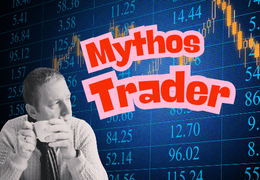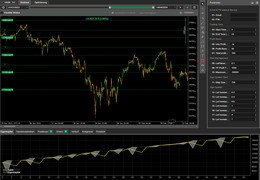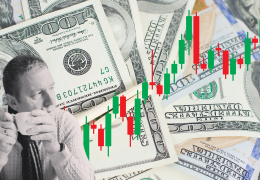Between reality and illusion If you want to know what trading really means—beyond luxury cars, piles of cash, and...
Search in blog
Blog categories
- FAQ – Your guide through the world of finance and technical facilities (2) click
- Daytrading Almanac (27) click
- Press release (23)
- Educational (26) click
- Projects (9)
- Chart analysis (39) click
- Trading bots for cTrader (11)
- AI in trading (5)
- Trading Strategien (11)
- Trading signals and stock market letters (46)
Latest posts

When it comes to traders, social media platforms often create a rather one-sided image: a young face smiling at the...

The TegasFX Instant Funding program sets a new standard for traders seeking quick access to capital without having to...

Backtesting trading strategies is an essential tool for traders who want to validate their methods across historical...

introduction In the world of trading, it can be challenging to balance the intense market activity and the rapid...
Popular posts





Featured posts





Photo gallery
No featured images
Archived posts
Top authors
-
 Christian Lill 70 Posts View posts
Christian Lill 70 Posts View posts -

-

-

-

The Dangers of One-Sidedness: Why Traders Need More Than Just One Strategy
The Dangers of One-Sidedness: Why Traders Need More Than Just One Strategy
For many new traders, it may be tempting to focus on a single strategy or join groups that only follow a specific approach. But this one-sidedness can do more harm than good in the long run. Here are five negative aspects to consider:
-
Lack of adaptability to market changes
Financial markets are dynamic and subject to constant change due to economic events, political developments and global trends. A strategy that works today may be ineffective tomorrow. If you rely on only one method, you lack the flexibility to respond to new market conditions.
-
Increased risk due to lack of diversification
Diversification is a fundamental principle in risk management. By spreading your portfolio across different strategies and asset classes, you reduce overall risk. A single strategy can put your capital at great risk, especially if it fails in a particular market phase.
-
Limited learning and personal development
Trading offers a wealth of knowledge and techniques. Limiting yourself to just one strategy prevents you from learning new skills and deepening your understanding of the markets. This limited approach to learning can reduce your chances of long-term success.
-
Danger of group psychology and herd instinct
In groups that focus exclusively on strategy, collective bias can arise. Critical thinking may be suppressed, and members may make decisions based more on peer pressure than on sound analysis. This can lead to irrational behavior and financial loss.
-
Overlooking individual strengths and preferences
Every trader has unique skills, risk tolerances and time availability. A single strategy may not fit your personal profile. By trying different approaches, you can find out which methods suit you best and thus increase your chances of success.
What you can do about it
To counteract these negative aspects, you should act proactively:
-
Continuous Education : Invest in your education by learning different trading strategies and understanding how different markets work. Use books, online courses and seminars to expand your knowledge.
-
Develop your own strategies : Use the knowledge you have gained to develop your own trading strategies. Test them in safe environments such as demo accounts before using real capital.
-
Networking and sharing : Join different trading communities to gain different perspectives. Sharing with other traders can help you refine your own approaches and gain new ideas.
-
Foster adaptability : Stay flexible and ready to adjust or change your strategies as market conditions change. Regularly reviewing and adjusting your methods is critical to long-term success.
-
Prioritize risk management : Implement effective risk management techniques such as stop-loss orders and position size control to protect your capital and minimize losses.
-
There is no Holy Grail in Trading
A common myth in trading is the existence of an ultimate strategy that always leads to success. But the reality is that there is no "Holy Grail". Every strategy has its advantages and disadvantages and does not work in all market conditions. Successful traders recognize this and instead rely on a combination of methods and constant adaptation.
The path to becoming a professional trader: Developing and mastering your own strategies
What distinguishes a professional trader is not the blind following of a single strategy, but the ability to master different approaches and develop your own strategies. This includes:
-
In-depth market understanding : Explore the mechanisms that move markets and understand the underlying economic factors.
-
Adaptability : Be prepared to optimize your strategies based on market analysis and performance data.
-
Discipline and Emotional Control : Successful trading requires discipline to stick to your strategies and the ability to control emotions such as fear and greed.
-
Continuous learning : Markets are constantly changing, so lifelong learning is a must. Keep yourself updated with new developments and techniques.
so
While it may be tempting to rely on a single strategy or move in groups that only follow one approach, this can limit your trading career. By learning different strategies, developing your own methods and continuously working on your personal and professional development, you lay the foundation for sustainable success in trading.
Remember : There is no quick path to riches and no Holy Grail in trading. Your success depends on your ability to remain flexible, manage risk and constantly learn. Mastering and developing your own strategies is the key to becoming a professional trader.
Here is an alternative mentoring program
Leave a comment
Related posts
 Case study: Automated trading (bot trading) and its impact on retail investors’ leisure activities
Case study: Automated trading (bot trading) and its impact on retail investors’ leisure activities
 Tradingbot vs. Tradingcoach
Tradingbot vs. Tradingcoach
 AI FAE think tank
AI FAE think tank
 Warnung vor Schneeballsystemen
Warnung vor Schneeballsystemen
